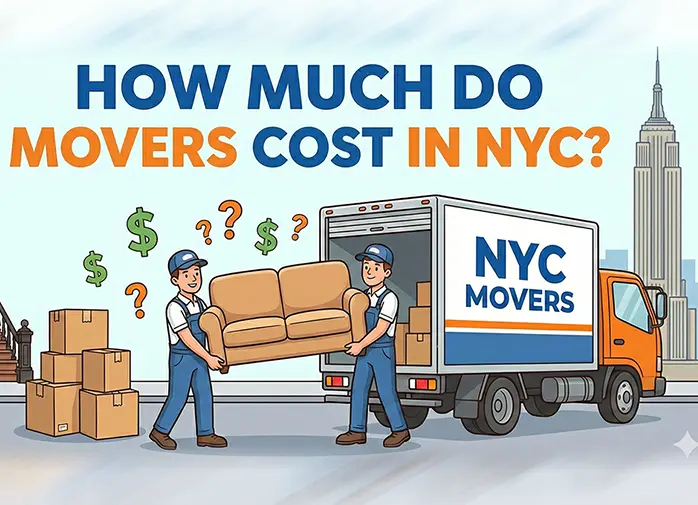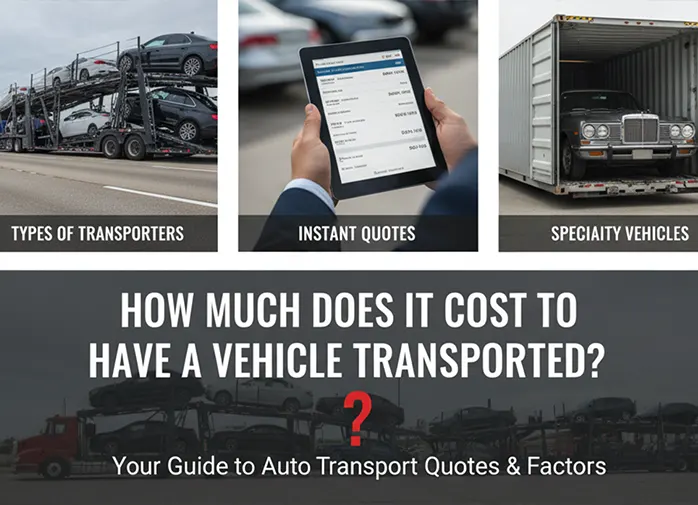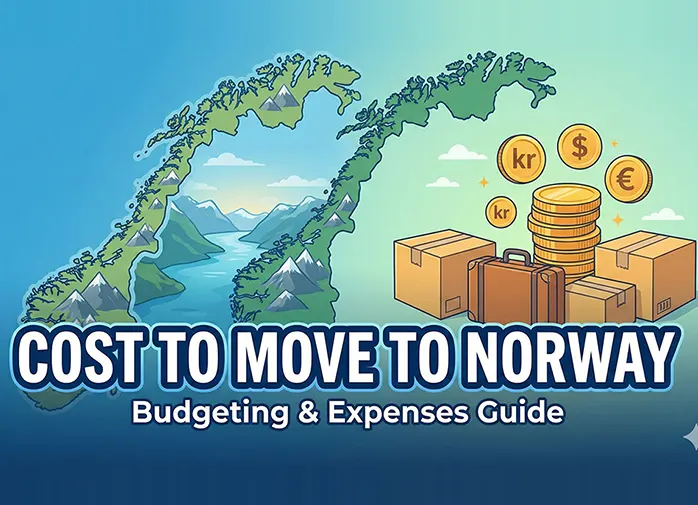Is 20k Enough to Move Out?

Moving out on your own is an exciting milestone, but it also comes with significant financial responsibilities. One of the most common questions people ask when considering this big step is, “Is $20,000 enough to move out?”
The answer depends on various factors, such as your location, lifestyle, and personal circumstances. While $20,000 is far more than a starter budget, it’s still crucial to have a clear understanding of the costs associated with moving out and living independently.
To determine if $20,000 is sufficient, you’ll need to consider several key aspects:
- The cost of living in your desired area
- Upfront moving expenses
- Ongoing monthly bills
Additionally, it’s essential to:
- Assess your current financial situation
- Develop a comprehensive budget
- Explore strategies to maximize your savings
By diving into these factors, you’ll be able to make an informed decision about whether $20,000 is enough for you to take the leap into independent living. With a better understanding of what it takes to move out successfully, you can create a personalized plan to achieve your goal of financial independence.
How Much Should You Save Before Moving Out?
Moving out requires careful financial planning, and the amount you should save depends on your location, lifestyle, and income. Generally, you should aim to save at least 3–6 months of living expenses before moving out, which often ranges from $10,000 to $20,000.
With $20,000 saved, you’re already meeting or exceeding this recommendation. This amount gives you a strong cushion that covers upfront costs, emergency savings, and a buffer for lifestyle adjustments.
The recommended savings can be broken down into three main categories:
- Upfront costs – first month’s rent, security deposit, and moving expenses
- Emergency fund – at least 3–6 months of living expenses
- Ongoing expenses buffer – extra funds to handle unexpected costs during your transition
In high-cost metropolitan areas, you may need to be more cautious with spending, as $20k can deplete faster. In mid-sized cities and suburban areas, however, $20k can support you comfortably for an extended period.
Minimum Savings Breakdown | Is 20k Enough to Move Out?
Your $20,000 savings should typically include:
- First month’s rent and security deposit (usually 1–2 months’ rent, $2,000–6,000 depending on city)
- Moving expenses ($1,000–3,000 for professional movers or rentals)
- Basic furniture and supplies ($2,000–5,000 depending on needs)
- Emergency fund (3–6 months of expenses, $6,000–10,000)
- Buffer for unexpected costs ($1,000–2,000)
This breakdown shows that $20k is generally enough to cover both the essentials and provide a safety net.
Assessing Your Financial Situation on Paper
Evaluating Your Income and Savings
Determining Monthly Income
Start by calculating your monthly income from all sources — salary, side jobs, freelance gigs along with moving checklist, This ensures you know how quickly your $20k will need to stretch before being replenished.
Assessing Current Savings
You already have $20,000 available. The key decision is how much of it you want to allocate to upfront costs versus how much to keep in reserve. A smart balance is to use no more than 25–30% for moving costs and setup, while keeping the rest as an emergency and lifestyle buffer.
Considering Additional Income Sources
If you want your $20k to last longer, consider side income. Even small earnings from part-time work or freelancing can extend your savings by months.
Understanding Your Existing Expenses
Identifying Essential Expenses
Account for non-negotiable costs like:
- Rent
- Utilities
- Groceries
- Transportation
- Insurance and healthcare
These expenses must be prioritized in your monthly budget.
Recognizing Non-Essential Expenses
Dining out, subscriptions, online shopping, and entertainment can eat into savings quickly. With $20k, you have more flexibility, but cutting back on non-essentials will allow your savings to last much longer.
Exploring Areas for Cost Reduction
Negotiate insurance, reduce utility usage, shop smarter, and downgrade unnecessary subscriptions. Every small saving stretches your $20k further.
Calculating the Cost of Moving Out
Estimating Rent or Mortgage Payments
Researching Average Rent Prices in Your Desired Location
Check rental listings on sites like Zillow and Apartments.com. In most U.S. cities, $20k provides enough cushion to comfortably secure a place without draining your savings.
Considering Size and Type of Accommodation
With $20k, you can afford more options — a one-bedroom, studio, or shared living. However, shared spaces will significantly extend your financial runway.
Factoring in Mortgage Costs
If you’re considering buying, $20k might serve better as part of a down payment rather than your only fund, since homeownership requires more upfront capital.
Accounting for Upfront Moving Expenses
When moving out, the initial upfront costs can be the biggest financial hurdle. Even with $20,000 saved, it’s important to plan where your money goes so you don’t drain your savings too quickly.
1. Security Deposits and First Month’s Rent
Most landlords require at least the first month’s rent upfront, plus a security deposit equal to one month’s rent. In high-demand markets like New York, Boston, or San Francisco, you may even need to pay last month’s rent in advance as well. This means moving into a $1,500 apartment could easily cost $3,000–$4,500 just to sign the lease. With $20k, this isn’t unmanageable, but it can take a chunk out of your savings right away.
2. Moving Transportation Costs
The cost of physically relocating your belongings varies widely depending on distance:
- Local move (within 50 miles): $500–$1,500 using movers, less if you rent a truck and DIY.
- Long-distance move (cross-country): $2,000–$5,000 depending on mileage, weight of belongings, and services chosen.
- Hiring professional movers offers convenience, but if you want to save, renting a U-Haul and asking friends for help can cut this cost dramatically.
3. Packing Supplies and Equipment
Boxes, tape, bubble wrap, and protective blankets add up fast. Buying everything brand-new could run you $200–500. A smart way to save is by sourcing free boxes from grocery or retail stores, or checking local community boards where people give away moving supplies after their move.
4. Furniture and Appliances
If you’re starting from scratch, furnishing even a small apartment can cost $2,000–$5,000. Essentials include a bed, sofa, dining table, cookware, and possibly appliances if your unit doesn’t come with them. Shopping at IKEA, thrift stores, or online marketplaces like Facebook Marketplace and Craigslist can cut costs by 50% or more. With $20k, you don’t need to settle for barebones setups, but being smart about spending means you’ll have more money left for ongoing expenses.
Planning for Ongoing Living Expenses
After you’ve settled in, the real financial challenge isn’t the move itself—it’s keeping up with recurring monthly expenses. Even with $20,000 saved, you’ll want to map out a clear monthly budget so your savings aren’t drained faster than expected.
1. Utilities (electricity, gas, water, internet, phone): $200–500/month
Utility bills vary depending on your location, apartment size, and personal habits. A studio apartment may run closer to $150/month, while a two-bedroom could push $300–400. Adding internet and a mobile phone plan easily raises the bill another $100–150. Budgeting for the higher end ($500/month) ensures you’re covered even during peak seasons (like higher electricity in summer).
2. Groceries & Household Supplies: $300–600/month
Food is a major ongoing cost, but it’s also flexible. A single person who cooks at home can usually stay near $300/month. Dining out frequently, or living in high-cost cities, can easily double that figure. Household supplies (cleaning products, toiletries, paper goods) typically add another $50–100. A good strategy is to meal prep, buy in bulk, and shop sales to keep costs predictable.
3. Transportation: $150–400/month
How much you spend depends on your lifestyle:
- Car owners: Expect car payments, insurance, gas, and maintenance. This often totals $300–500/month or more.
- Public transit users: Monthly passes range from $50 in smaller cities to $150+ in places like New York or Chicago.
- If you’re moving to a walkable city with reliable transit, you can save significantly by skipping a car altogether.
4. Healthcare & Insurance: $200–500/month
This category is often underestimated. If your employer provides healthcare, your costs might be modest, but freelancers or self-employed individuals may pay $300–500/month for coverage. Renters insurance is another must-have, usually $15–25/month, but it can save you thousands if something goes wrong.
💡 Why Is 20k Enough to Move Out?
Even if your monthly living expenses total around $2,000–2,500, your $20k savings would last 8–10 months without any income at all. For most people, income is still coming in (salary or side jobs), meaning your savings serve as a powerful safety net rather than something you rely on daily. Here you can check the moving cost as well.
Developing a Comprehensive Budget
Categorizing Income and Expenses
- Fixed expenses: rent, utilities, subscriptions
- Variable expenses: groceries, dining out, entertainment
- Savings: keep at least $10k untouched as an emergency fund
Adjusting Your Budget Based on Priorities
Identifying Areas for Savings
With $20k, you don’t need to cut everything, but avoid lifestyle creep.
Prioritizing Essential Expenses
Always cover rent, food, and transportation first.
Setting Realistic Goals
Use your $20k as a foundation for future investments, travel, or debt repayment.
Maintaining Financial Discipline
Track your expenses monthly and avoid burning through savings too quickly.
Exploring Additional Factors and Strategies
- Location & cost of living variations – $20k stretches much further in smaller cities.
- Lifestyle adjustments – adopting frugal habits makes funds last.
- Roommate arrangements – splitting costs could let $20k cover more than a year.
- Financial assistance – government rental programs or community support can lower your living costs.
Conclusion
Determining whether $20,000 is enough to move out depends on your location, lifestyle, and personal financial situation. For most people, $20k is more than enough to cover upfront costs, create an emergency fund, and support a stable transition into independent living.
To make the most of your savings:
- Assess your income and expenses
- Calculate upfront and ongoing costs
- Build a realistic budget with room for flexibility
- Explore strategies to stretch your money further
Moving out is a major milestone. With $20,000, careful planning, and financial discipline, you’ll not only be ready to move but also have peace of mind knowing you’re financially prepared.
When you’re ready to take that step, Van Lines Move can help with professional moving services, making your relocation smooth, stress-free, and affordable.
Frequently Asked Questions
1. Is $50,000 enough to move out?
Yes, $50k is more than enough, allowing luxury and long-term stability.
2. Is $10,000 enough to move out?
Yes, but it provides less cushion than $20k, especially in high-cost cities.
3. How much money should I have saved before I move out?
Generally, 3–6 months of living expenses. For most, this means $10k–20k.
4. What is the recommended percentage of income to spend on rent?
Keep rent at or below 30% of your gross monthly income.
5. How much should I save for an emergency fund before moving out?
At least 3–6 months of expenses, which $20k easily allows.
6. Is it better to rent or buy when moving out for the first time?
Renting is better for flexibility, especially with $20k. Buying requires more.
7. What are some ways to reduce moving expenses?
Declutter, compare movers, move off-season, use second-hand furniture.
8. How can I prepare for unexpected expenses after moving out?
Build an emergency fund, track expenses, budget monthly, and get renters insurance.
Categories
- Long Distance Moving153
- Local Moving119
- Commercial Moving40
- Residential Moving34
- Last – Minute Moving25
- Moving Tips & Lifestyle10
- Furniture Moving9
- Moving Tips & How-To Guides8
- Moving services6
- Moving Cost5
- Moving Cost Calculator5
- state to state movers4
- Piano Moving3
- Car Transportation3
- Truck Rental3
- moving tips3
- Local Move3
- Moving companies3
- best moving rates3
- cheap moving companies3
- affordable moving companies3
- full-service movers3
- Moving Cost Guides3
- Junk Removal2
- Moving Container2
- Senior Moving2
- Senior Relocation Moving Companies2
- Moving Tools2
- Moving Estimates2
- interstate moving2
- Moving2
- cross-country move2
- Household moving2
- Moving Costs & Budgeting2
- Moving Tips & State Guides2
- Heavy Equipment1
- Senior Moving Services1
- office moving1
- office relocation1
- employee relocation1
- Car Transport1
- Vehicle Shipping1
- Car Shipping Services1
- Artificial Intelligence1
- Office Moving Services1
- Commercial Moving Companies1
- Corporate Moving Services1
- Corporate Movers1
- full-service moving companies1
- sustainable moving companies1
- green movers1
- Moving in US1
- Best places to move in 20251
- 2025 moving1
- Full-Service Moving Companies1
- College Moving1
- College moving services1
- Moving to College1
- Dorm Moving1
- Tips for moving1
- donate1
- sell1
- Movers in California1
- Movers in Studio City1
- Moving to California1
- Laws about Moving into California1
- Moving Laws1
- House moving1
- packing1
- cheap moving ways1
- Moving guide1
- International moving1
- moving across countries1
- international relocation program1
- move out cleaning1
- right packing supplies1
- pack while moving1
- Apartment moving1
- PODS1
- moving out1
- state to state move1
- California movers1
- Truck Rental1
- US Territory Relocation1
- International Moving1
- Shipping & Moving Tips1
- Moving Tips1
- Relocation Guide1
- Moving Budget Guide1
- Relocation Guides & Incentives1
- Moving Tools & Equipment Guides1
- Moving Services & Options1
- Moving Tips & How-To Guides1
- Moving Day & Settling In1
- Mobile Home Moving1
- Moving Guide & Tips1
- Moving Tips & State Comparisons1
- Moving Tips & City Guides1
- Moving Tips & Cost Guides1
- Long-Distance Moving Tips1
- Moving Tips & Financial Planning1
- Moving Tips & Home Preparation1
- Moving Tips & Planning1
- Vehicle Shipping & Auto Transport1
- Marketing & Lead Generation1
- International Moving Guides1
- San Francisco Moving Guide1
- NYC Moving1
- Local Movers1
- Budget Moving1

 Local Movers
Local Movers Last-Minute Movers
Last-Minute Movers Junk Removal
Junk Removal Long Distance Movers
Long Distance Movers Piano Movers
Piano Movers Heavy Equipment
Heavy Equipment Commercial Movers
Commercial Movers Moving Container
Moving Container Car Transportation
Car Transportation Furniture Movers
Furniture Movers Truck Rental
Truck Rental Moving Cost Calculator
Moving Cost Calculator Moving Planner
Moving Planner Packing Calculator
Packing Calculator Moving Checklist
Moving Checklist Moving Insurance
Moving Insurance FAQ
FAQ Contact Us
Contact Us Moving Loan
Moving Loan About Us
About Us











